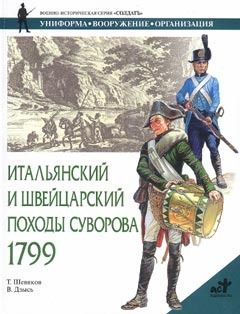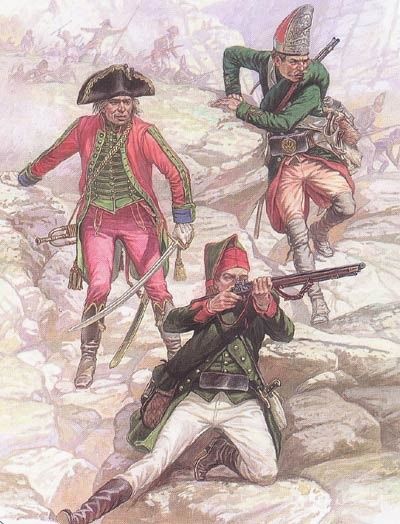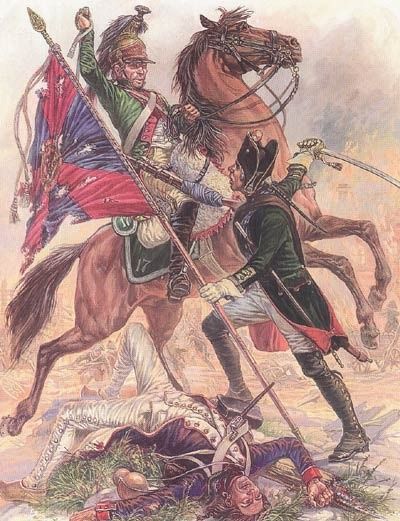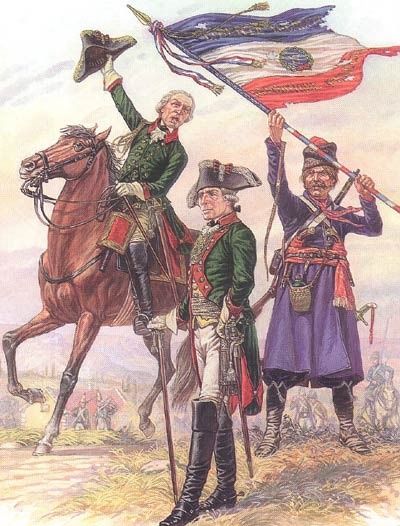AST-014 The Italian and Swiss Suvorov campaigns of 1799 book
Contents
Introduction
The Italian campaign
The Swiss campaign
The tactics and armament of the opponent parties
The Russian Army (the arrangement, equipment and colours)
The organization of the Russian Army
The uniform of the Russian Army
The colours and standards of the Russian Army
The Austrian Army (the arrangement, uniform, the colours)
The arrangement of the Austrian Army
The arrangement of the allies subsidiary contingents
The uniform of the Austrian Army
The colours and standards of the Austrian Army
The French Army (arrangement, uniform, colours)
The arrangement of the French Army
The arrangement of the French subsidiary contingents
The uniform of the French Army
The colours and standards of the French Army
The uniform of the French subsidiary contingents
Appendix. The quarter-bill of the Armies for the campaign of 1799
The list of the literature and the sources
44 pages, 27 illustrations
1. St.Gotard, 13 September, 1799
Squadron trumpeter of the 9th hussars' Erdedi's regiment (Austria) who is dressed in the old type of uniform (1767). The trumpeters of the Hungarian hussars regiments were traditionally hired from the Germans and that's why they were dressed into the full-dress uniform instead of hussar's pelisse and wore the hat instead of the cap. Since 1798 such kind of uniform was countermanded but until the 1800 the hussar's trumpeters still continued to wear their exotic uniform.
Chasseur of the Bagrations' chasseurs' (7th) regiment (Russia) dressed in the uniform of 1797, wore the forage hat instead of the unwieldy hat and with the aglet that is buttoned to the full-dress uniform.
The field engineer of the Nazimov's pioneer company (Russia). Only one pioneer company took part in the Italian-Swiss campaign. The field engineer had the rifle at the back of him that is not defined by the order but is available due the military actions he took part in.
2. Zurich, 16 September, 1799
The dragoon of the 17th dragoons' regiment (France) dressed in the ordered uniform of 1793 year type.
The sub-ensign of the musketeer company of the musketry Markov's the 1st (Muromsk) regiment (Russia). During the battle near Zurich the regiment lost three colours (one regimental that was found later on and three company ones).
The rank of the 46th line Demi-brigade (France).
3. The siege of Mantua, April to July of 1799
Sergeant of the regiment of the national border (Austria). The second Bakinsk #11 regiment of the national border took part at the siege of Mantua. The uniform of the sergeants was rather voluntary (the traditional privilege), sometimes very rich as the same as the armament.
The artilleryman of the first vacant artillery regiment (Austria) who is dressed in the regulated uniform of the 1798. The hat brims are turned up in contrast to the army regulated variant. Two companies of that regiment took part at the siege of Mantua.
The drummer of the Durasov's artillery company (Russia) who is dressed in the uniform of 1797. The company took part at the siege of Mantua as the part of the Kray's corps.
4. Trebbia, 8 June, 1799
Officer of the Couriers corps (Russia). The corps was established in 1797 to forward the personal Emperor's directions. As usual, two or three couriers participated into the campaign together with the Army. Besides other responsibilities they should deliver the captured colours and standards.
Field-officer of the grenadier Rozenberg's (Moscow) regiment (Russia).
The regiment captured three French colours at the battles near Trebbia and Nyra. It was rewarded by the Maltese colours with the legend on the distinguished service.
Cossack of the Don Cossacks regiment (Russia). The Don Cossacks regiment of Posdeev the sixth was attached to the Baranovskiy's second brigade that included the Rozenberg's grenadiers regiment. The Cossacks uniform was not regulated but the combination of red and blue, traditional for the Don Cossacks, were followed in the most cases. The Cossack has got the colours of the 17th Line Demi-brigade in his arms that was captured by the Moscow grenadiers.






2 comments:
I picked up this booklet several years ago from a Russian vendor.
The color plates were a bit washed out. Your photos look much better than the illustrations in my book. Still, a very useful resource for those interested in this period.
Interesting book, but there is an error in that pic of the Balkan irregular ascribed to 11th (2nd Banal) Grenz Regiment. There is an extensive OB for Mantua here http://www.napoleon-series.org/military/battles/1799/c_1799z18.html and while there are a number of Grenzer units, 2nd Banal is not among them. However, the 15th Light Battalion, formerly Mihailovich's Serb Freikorps were, so he is an NCO from there. In any event, I would be interested to see original source as pics of these Freikorps are pretty rare.
Post a Comment